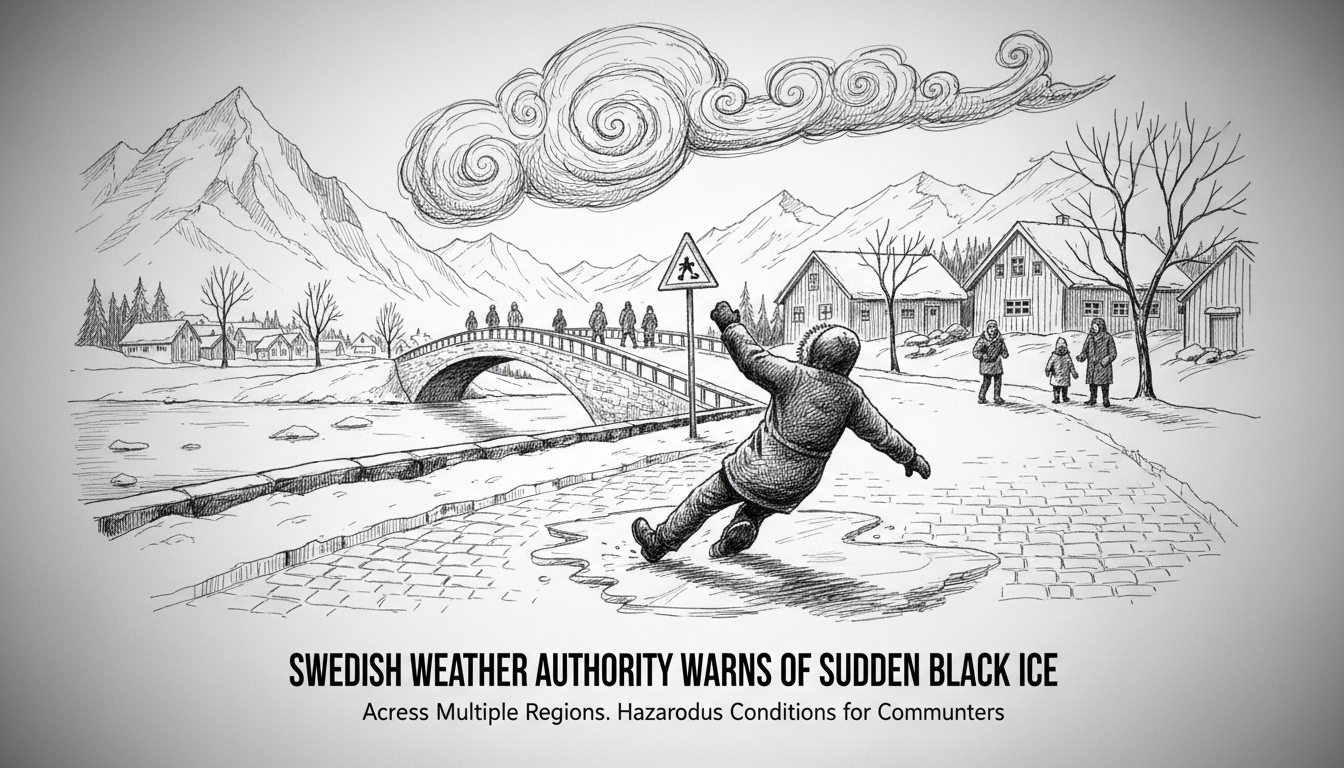The Swedish Meteorological and Hydrological Institute has issued yellow warnings for sudden black ice across several northern counties. This weather alert affects northern Värmland, Dalarna, parts of Jämtland County, Västernorrland County, and northern Gävleborg County. Coastal areas of Västerbotten and Norrbotten also face hazardous conditions.
These sudden ice formations create dangerous travel conditions for morning commuters. Road surfaces can turn treacherous within minutes as temperatures drop overnight. Many Swedes are sharing stories of unexpected slips on their way to work or school.
Stockholm residents might feel relieved they're not in the warning zones, but the capital isn't immune to similar conditions. The city's archipelago areas often experience microclimates that create localized ice patches. I recall walking near Djurgården last winter when black ice transformed a pleasant stroll into a careful balancing act.
Swedish society has developed unique adaptations for these winter challenges. Most Swedes keep ice grips in their cars or bags during colder months. These simple devices slip over shoes and provide crucial traction. Many workplaces even have communal baskets of ice grips near entrances during icy periods.
Northern communities face particular challenges with these weather warnings. In cities like Umeå and Luleå, where darkness dominates winter days, black ice becomes especially hazardous. Municipal workers often spread gravel and salt on sidewalks before morning rush hours.
Public transportation systems across affected regions typically adjust schedules during such warnings. Buses may run slower routes, and train services sometimes experience delays. Commuters should check local transit updates before heading out.
These weather patterns reflect broader Swedish climate trends. While southern Sweden experiences milder winters recently, northern regions continue facing traditional cold snaps. The divide between north and south becomes particularly visible during weather events like this.
International residents often find Swedish winter preparedness impressive. The systematic approach to weather warnings and public safety measures demonstrates Sweden's practical relationship with nature. This contrasts with many countries where similar conditions cause widespread disruption.
Local authorities recommend several precautions during black ice warnings. Wear proper footwear with good grip. Allow extra travel time. Use handrails on stairs. Drive significantly slower than usual. These simple steps can prevent most ice-related accidents.
The current situation highlights how Swedish society balances modern life with natural challenges. Weather warnings represent just one part of the country's comprehensive approach to public safety. This system has evolved through decades of managing Sweden's distinct seasonal changes.

